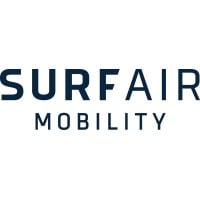
Surf Air Mobility
Transforming air mobility through software and electrification.



Transforming air mobility through software and electrification.

Ethiopian Airlines Group (Ethiopian) is a true African success story, transforming a visionary dream into a globally renowned reality for nearly eight decades. Operating flights to more than 160 domestic and international passenger, and cargo destinations across five continents, Ethiopian bridges the gaps between Africa and the world. Emphasizing passenger comfort and environmental sustainability, Ethiopian utilizes ultra-modern aircraft such as Boeing 737s, 777s, 787s, Airbus A350-900, A350-1000, and De Havilland Q400. Ethiopian, the Star Alliance member airline since 2011, champions in various coveted awards including Skytrax’s ‘Best Airline in Africa Award’ for eight consecutive years, APEX ‘Best Overall in Africa’ award and ‘Leadership in Connecting Africa through Transport’ Award among others. Ethiopian aims to further excel in its success through a strategic plan dubbed ‘Vision 2035’ and become one of the top 20 most competitive and leading aviation groups in the world. Embracing a Pan-African spirit, Ethiopian is pursuing multi-hub strategy through hubs in Lomé, Togo with ASKY, in Lilongwe, Malawi with Malawi Airlines, in Lusaka, Zambia with Zambia Airways, and in Kinshasa, Democratic Republic of the Congo (DRC) with Air Congo.
Security & Compliance Standards Overview












No incidents recorded for Surf Air Mobility in 2025.
No incidents recorded for Ethiopian Airlines in 2025.
Surf Air Mobility cyber incidents detection timeline including parent company and subsidiaries
Ethiopian Airlines cyber incidents detection timeline including parent company and subsidiaries
Last 3 Security & Risk Events by Company
Angular is a development platform for building mobile and desktop web applications using TypeScript/JavaScript and other languages. Prior to versions 19.2.16, 20.3.14, and 21.0.1, there is a XSRF token leakage via protocol-relative URLs in angular HTTP clients. The vulnerability is a Credential Leak by App Logic that leads to the unauthorized disclosure of the Cross-Site Request Forgery (XSRF) token to an attacker-controlled domain. Angular's HttpClient has a built-in XSRF protection mechanism that works by checking if a request URL starts with a protocol (http:// or https://) to determine if it is cross-origin. If the URL starts with protocol-relative URL (//), it is incorrectly treated as a same-origin request, and the XSRF token is automatically added to the X-XSRF-TOKEN header. This issue has been patched in versions 19.2.16, 20.3.14, and 21.0.1. A workaround for this issue involves avoiding using protocol-relative URLs (URLs starting with //) in HttpClient requests. All backend communication URLs should be hardcoded as relative paths (starting with a single /) or fully qualified, trusted absolute URLs.
Forge (also called `node-forge`) is a native implementation of Transport Layer Security in JavaScript. An Uncontrolled Recursion vulnerability in node-forge versions 1.3.1 and below enables remote, unauthenticated attackers to craft deep ASN.1 structures that trigger unbounded recursive parsing. This leads to a Denial-of-Service (DoS) via stack exhaustion when parsing untrusted DER inputs. This issue has been patched in version 1.3.2.
Forge (also called `node-forge`) is a native implementation of Transport Layer Security in JavaScript. An Integer Overflow vulnerability in node-forge versions 1.3.1 and below enables remote, unauthenticated attackers to craft ASN.1 structures containing OIDs with oversized arcs. These arcs may be decoded as smaller, trusted OIDs due to 32-bit bitwise truncation, enabling the bypass of downstream OID-based security decisions. This issue has been patched in version 1.3.2.
Suricata is a network IDS, IPS and NSM engine developed by the OISF (Open Information Security Foundation) and the Suricata community. Prior to versions 7.0.13 and 8.0.2, working with large buffers in Lua scripts can lead to a stack overflow. Users of Lua rules and output scripts may be affected when working with large buffers. This includes a rule passing a large buffer to a Lua script. This issue has been patched in versions 7.0.13 and 8.0.2. A workaround for this issue involves disabling Lua rules and output scripts, or making sure limits, such as stream.depth.reassembly and HTTP response body limits (response-body-limit), are set to less than half the stack size.
Suricata is a network IDS, IPS and NSM engine developed by the OISF (Open Information Security Foundation) and the Suricata community. In versions from 8.0.0 to before 8.0.2, a NULL dereference can occur when the entropy keyword is used in conjunction with base64_data. This issue has been patched in version 8.0.2. A workaround involves disabling rules that use entropy in conjunction with base64_data.